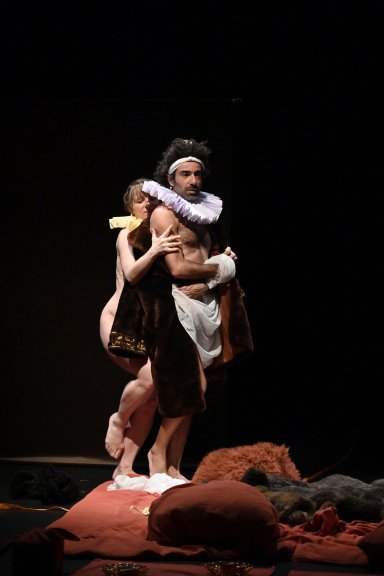24 & 26.11.22
Théâtre du Fil de l’eau
Two choreographers and two perspectives. At the invitation of baroque choreographer Béatrice Massin, Mickaël Phelippeau will create the first piece for the Fabrique des écritures (a commissioning process inviting choreographers to create pieces for the Fêtes galantes company). His piece is called Lou, and it is a choreographic portrait of Lou Cantor. With this star performer of the Fêtes galantes company, he will delve into a specific repertory while following his own exploration of comparative alterity and proposing "the experience of a body". His solo sheds light on the subjective trajectory of one for whom the "belle danse" of the baroque tradition is a dance of the present and a woman's dance. Gaëlle Bourges also answered favorably to Béatrice Massin's offer to revisit baroque art through the perspective of the works of Rubens. The choreographer chose to inspire herself from the painting La petite pelisse (The Pelt), which shows a naked woman half-covered in a pelt. In the tradition of her other pieces that explore the connections between the visual arts and dance, Loulou (la petite pelisse), features a female figure who becomes the vessel for a subtle reflection on the connections between fur and eroticism in arts led by dancers Lou Cantor and Philippe Lebhar – echoing the memory of actress Dominique Sanda naked under her fur coat in the movie by Jacques Demy Une chambre en ville…
For the program La Fabrique des écritures*, Béatrice Massin has invited choreographers to confront their own idioms with the world of Baroque art. Mickaël Phelippeau worked with Mathilde Monnier and Daniel Larrieu before he started developing “dual choreographic portraits” in 2008, in which he met with artists and non-professional dancers (Footballeuses, Juste Heddy, De Françoise à Alice). Gaëlle Bourges likes to interrogate the perspectives on iconic representations in art history in her choreographic and visual pieces (Le verrou, À mon seul désir, Le bain).
